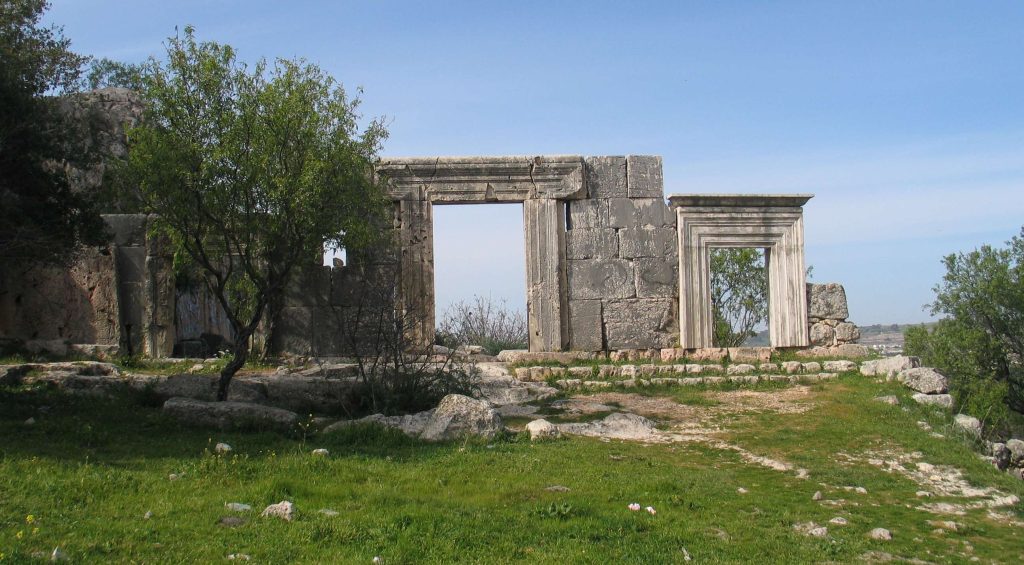The Old Synagogue at Meron has a super interesting story to tell. The Excavations at Meron found artifacts dating to the Hellenistic period at the foundation of the site. The economic and cultural affinities of the inhabitants of the Meron area at this time were directed toward the north, to Tyre and southern Syria in general. Josephus fortified Meron in the 1st century CE and called the town Mero or Meroth.
According to Avraham Negev, an Israeli archaeologist, by the Second Temple period, Merom was known as Meron. It is mentioned in the Talmud as being a village in which sheep were reared, which was also renowned for its olive oil. A tower that still stands at a height of 18 feet (5.5 m) was constructed in Meron in the 2nd century CE. In the last decade of the 3rd century CE, a synagogue was erected in the village. Known as the Meron synagogue, it survived an earthquake in 306 CE, though excavations at the site indicate that it was severely damaged or destroyed by another earthquake in 409 CE.
More About the Old Synagogue at Meron
The site of the synagogue was surveyed as part of the PEF Survey of Palestine conducted in 1875 by a delegation from the Palestine Exploration Fund for the Study of Israel headed by Claude Conder. The first excavation at the site was conducted in 1905 by Heinrich Kohl and Karl Wetzinger as part of their comprehensive survey of synagogues in Galilee.
Safed Ultimate Guide Mt. Meron Nature Reserve
“One of the largest Palestinian synagogues in the basilica style”, is the earliest example of the so-called ‘Galilean’ synagogue and consists of a large room with eight columns on each side leading to the facade and a three-doored entrance framed by a columned portico. Artifacts uncovered during digs at the site include a coin of Probus (276–282 CE) and African ceramics dating to the latter half of the 3rd century; indicating that the city was commercially prosperous at the time. Coins found in Meron are mostly from Tyre; though a large number are also from Hippos; which lay on the other side of Lake Tiberias. Peregrine Horden and Nicholas Purcell write that Meron was a prominent local religious center in the period of late Antiquity. Some time in the 4th century CE, Meron was abandoned for reasons as yet unknown.


